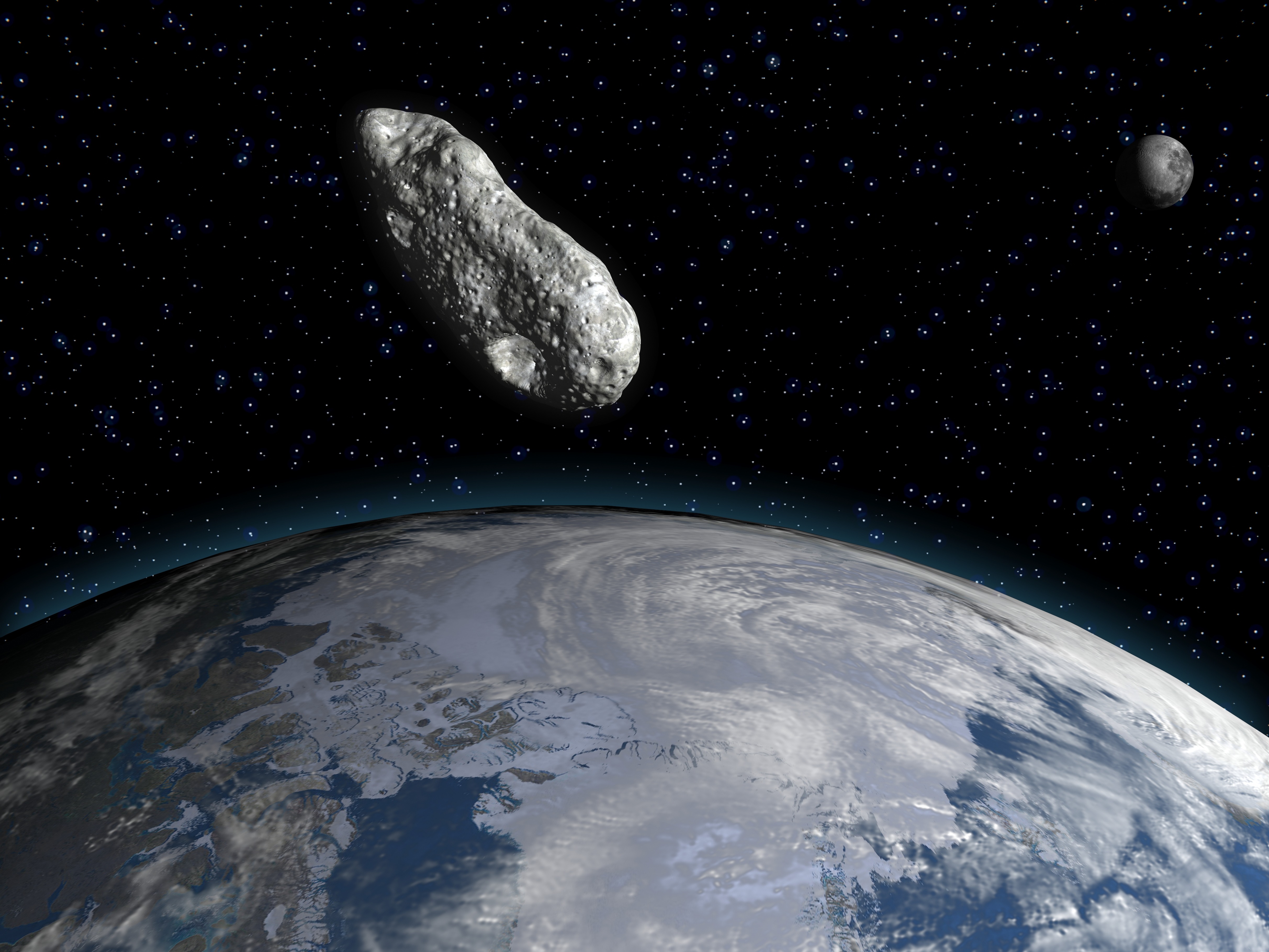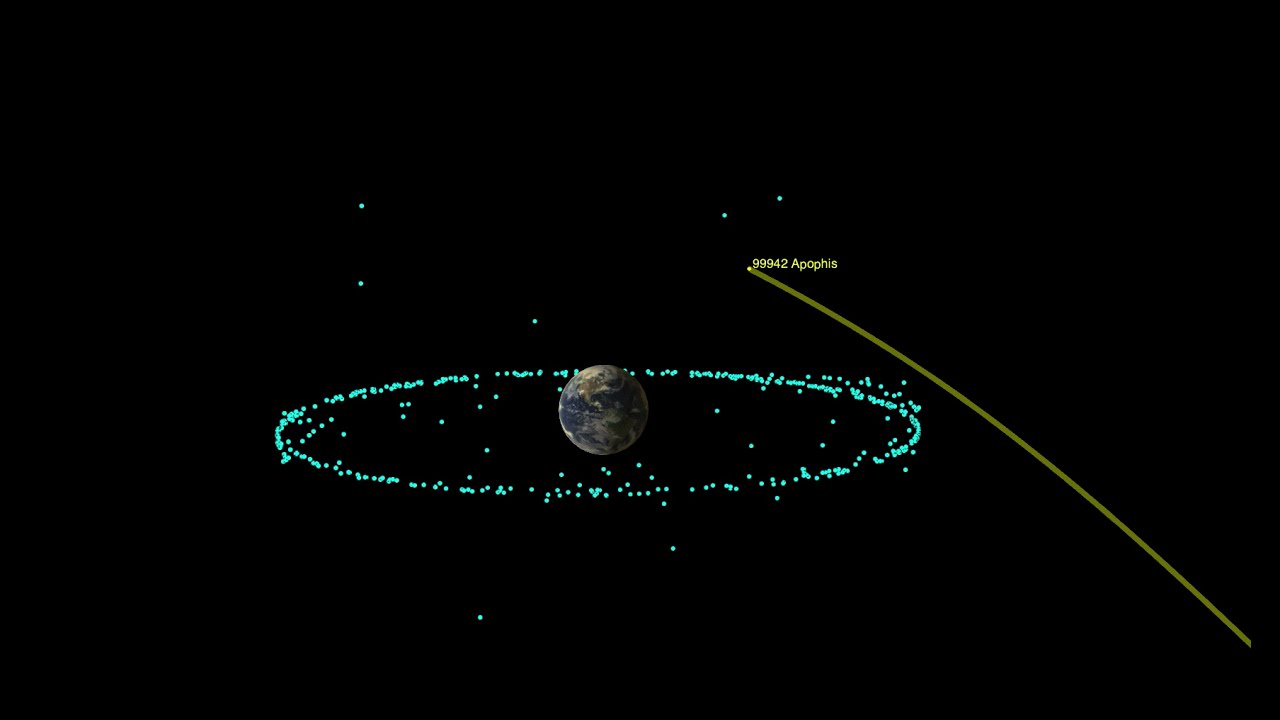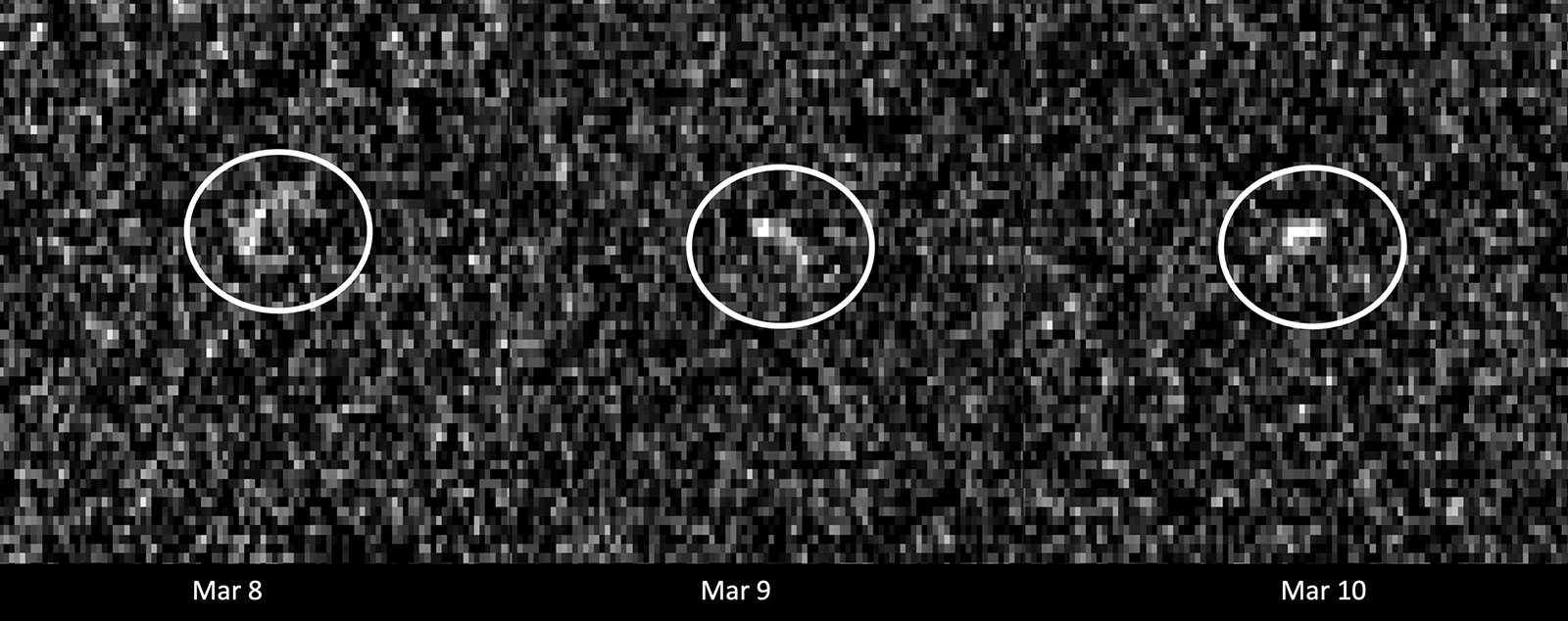Infamous asteroid Apophis 'rediscovered' as scientists test asteroid defense mechanisms
The asteroid, which was once thought to be a risk to Earth in 2029, was the perfect test subject during its recent close approach.

A test of whether asteroid defense systems could spot a potentially hazardous near-Earth asteroid on its closest approach successfully "rediscovered" the infamous asteroid 99942 Apophis, which will make a close encounter with our planet in 2029.
For this asteroid defense exercise, all previous data on Apophis were made inaccessible. This meant that astronomers had to start afresh during the asteroid's close approach, which began in December 2020 and culminated in March 2021. Would Apophis slip through the net, or could our network of sky surveys find it?
Many asteroid-hunting surveys, which routinely scan the sky for potentially hazardous asteroids, were involved in the project, which included over 100 scientists from 18 countries.
Related: Planetary defense experts use infamous asteroid Apophis to practice spotting dangerous space rocks
Apophis caused a stir when it was first discovered back in 2004. At that time, the asteroid's orbit was not known well enough to rule out an impact with Earth in 2029 or 2036. The B612 Foundation, a nonprofit that supports research and technologies for mapping and navigating the solar system, publicized the potential danger posed by Apophis, but refined calculations of its orbit have since ruled out the possibility of an impact anytime soon.
Now, astronomers were tasked with doing this again to prove their ability to quickly identify and then assess the hazard posed by any future discovery of a potentially dangerous asteroid.
The project "stress-tested the entire planetary defense response chain, from initial detection, to orbit determination, to measuring the asteroid's physical characteristics and even determining if and where it might hit Earth," Vishnu Reddy, an associate professor at the University of Arizona's Lunar and Planetary Laboratory who led the campaign, said in a NASA statement.
Get the Space.com Newsletter
Breaking space news, the latest updates on rocket launches, skywatching events and more!

During the test, Apophis was spotted first by the Catalina Sky Survey in Arizona, with subsequent detections from the Asteroid Terrestrial-impact Last Alert System (ATLAS) — which has observatories in Chile, Hawaii and South Africa — and the Panoramic Survey Telescope and Rapid Response System (Pan-STARRS) in Hawaii. Perhaps the most important measurements were from NASA's Near-Earth Object Wide-field Infrared Survey Explorer (NEOWISE) spacecraft, which used its thermal vision to accurately measure the size and shape of Apophis. It identified Apophis as an elongated object with a diameter of 886 to 1,345 feet (270 to 410 meters).
Based on NEOWISE's measurements, scientists at NASA's Ames Research Center in California got a better estimate of the energy that would be unleashed if Apophis were to collide with Earth. They calculated that an impact would carry approximately 8.5 x 10^19 joules of energy, which is equivalent to 20 million kilotons of TNT and 10,000 times more powerful than the Chelyabinsk meteor airburst over Russia in 2013. The damage wrought by Apophis would be devastating, but only on a regional scale; it is not massive enough to cause the global extinction of human life.
By Dec. 23, 2020, the International Astronomical Union's Minor Planet Center, which is the collecting body for all asteroid and comet observations, had enough data to announce the rediscovery of Apophis as a new asteroid but not enough data to rule out an impact.

"Even though we knew that, in reality, Apophis was not impacting Earth in 2029 starting from square one … there were large uncertainties in the object's orbit that theoretically allowed an impact that year," Davide Farnocchia, a navigation engineer at NASA's Jet Propulsion Laboratory, said in the statement.
Farnocchia led efforts to calculate Apophis' orbit, which were boosted by the Goldstone Solar System Radar in California in March 2021. This ground-based radar produced images of Apophis and measured its velocity and distance, thus yielding a more accurate calculation of the asteroid's orbit. This information was finally enough to rule out a collision in 2029 or for at least the next 100 years.
"Seeing the planetary defense community come together during the latest close approach of Apophis was impressive," Michael Kelley, a program scientist with NASA's Planetary Defense Coordination Office, said in the statement. "Even during a pandemic, when many of the exercise participants were forced to work remotely, we were able to detect, track, and learn more about a potential hazard with great efficiency. The exercise was a resounding success."
NASA's OSIRIS-REx mission will visit Apophis during its close approach to Earth in 2029. Meanwhile, a successor to NEOWISE, the NEO Surveyor, will launch mid-decade.
Two papers describing the results of the project were published May 31 in The Planetary Science Journal.
Follow Keith Cooper on Twitter @21stCenturySETI. Follow us on Twitter @Spacedotcom and on Facebook.
Join our Space Forums to keep talking space on the latest missions, night sky and more! And if you have a news tip, correction or comment, let us know at: community@space.com.

Keith Cooper is a freelance science journalist and editor in the United Kingdom, and has a degree in physics and astrophysics from the University of Manchester. He's the author of "The Contact Paradox: Challenging Our Assumptions in the Search for Extraterrestrial Intelligence" (Bloomsbury Sigma, 2020) and has written articles on astronomy, space, physics and astrobiology for a multitude of magazines and websites.









